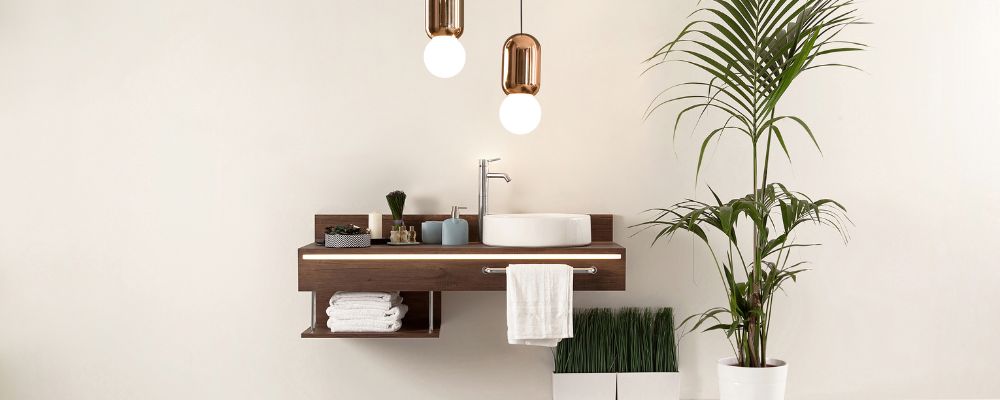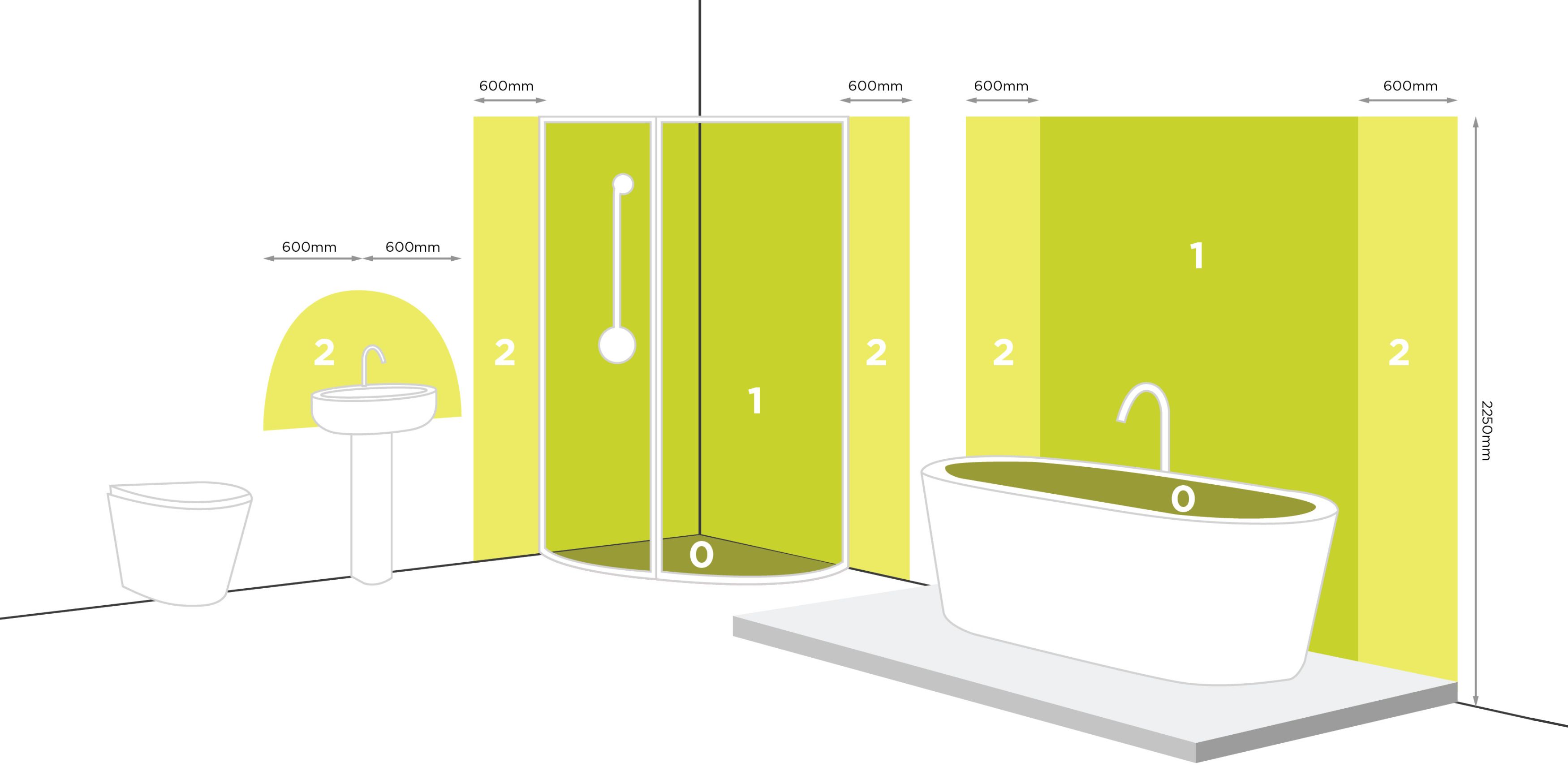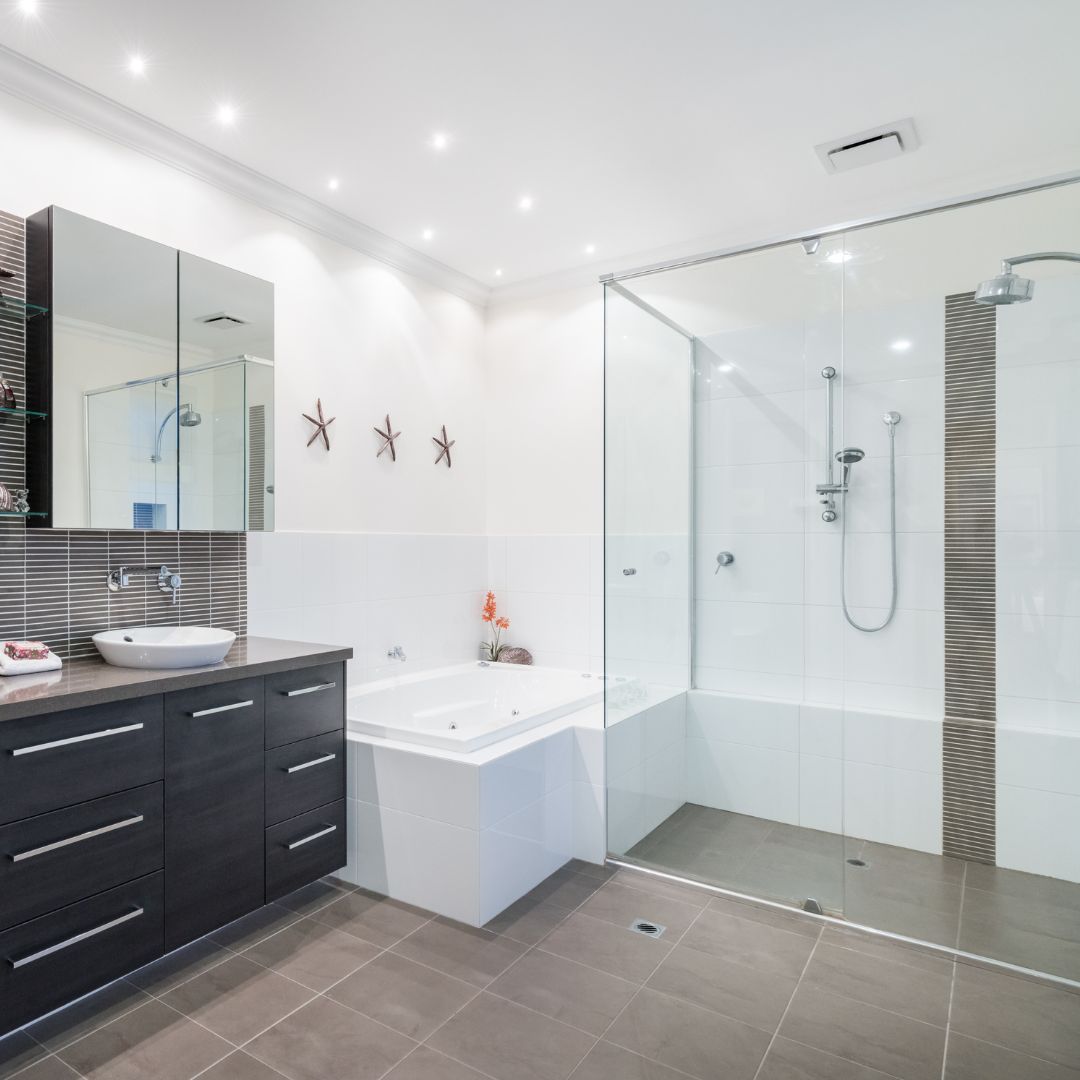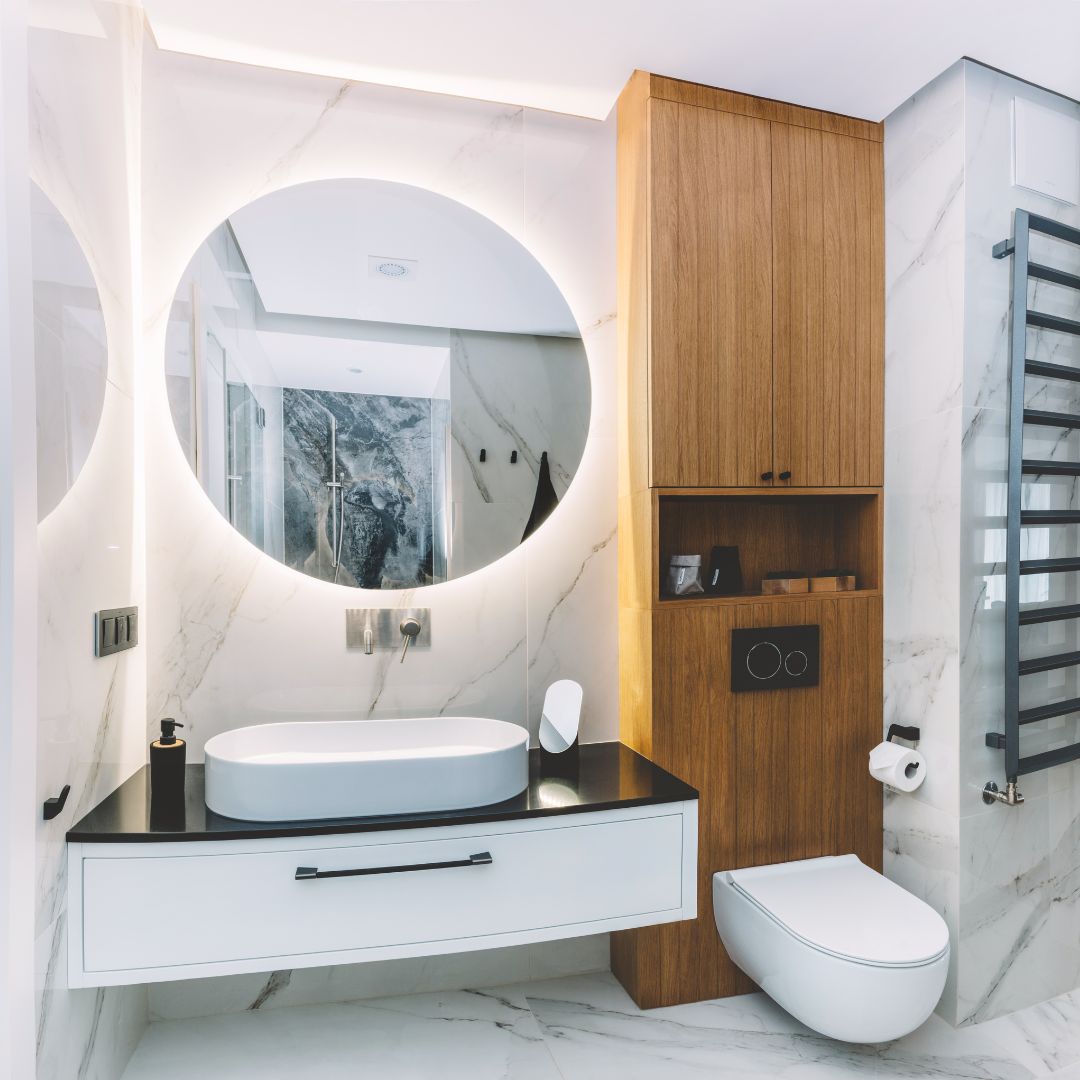A Guide to Bathroom Lighting
Effective lighting is a crucial part of any bathroom design. Bathrooms of any size, especially in residential settings, are both very intimate and very task-oriented spaces creating a specific requirement for illumination which fosters comfort and relaxation as well as functionality.
The primary role of good lighting in any bathroom is to enhance usability, enabling tasks such as grooming, applying makeup, and showering to be carried out safely and efficiently. Beyond this, lighting plays a significant role in the users’ sense of ease and well-being, with effective use of accent lighting transforming a bathroom into a tranquil, spa-like retreat.
To create a well-lit bathroom, it’s important to consider safety and usability, placement of luminaires and the overall effect created by a combination of different types of lighting.
SAFETY
It is important to ensure that all fixtures have the appropriate IP rating for use within a bathroom due to the presence of water and vapours.
Bathrooms are categorised into zones based on their proximity to water sources, with each zone requiring a specific minimum IP liquid rating.
Zone 0:
This is any area submerged in water e.g. within the bathtub or in the shower floor. Any luminaire used in this area requires a minimum rating of IP67 and must be low voltage (max 12V).
Zone 1:
Covers areas above Zone 0 (inside the shower cubicle or above the bath) up to a height of 2.25m. This area requires at least an IP liquid rating of 4, however many choose to utilise IP65 rated luminaires within this zone.
Zone 2:
This zone stretches 75 cm above and 60 cm on either side of Zone 1. This zone also requiring a minimum IP rating of IPX4. For the purposes of bathroom zoning, any sink is classified as Zone 1 so a Zone 2 is created with a radius of 60cm from the taps.
Areas outside of these designated zones do not have specific requirements. However, it is generally recommended to use fixtures with at least an IP44 rating in all bathroom areas for safety and durability.
PLACEMENT & SELECTION OF LUMINAIRES
When selecting and placing lighting within the bathroom design, there are three main types of lighting you'll be using: ambient, task and accent. Consider the needs of the room and the user while selecting starting with ambient lighting and building from there.
Ambient Lighting
Ambient lighting serves as the primary source of light in a bathroom. It is usually soft and non-intrusive, providing enough light to move around safely and comfortably.
Downlights or ceiling mounted fixtures (either flush or semi-flush) will illuminate the entire bathroom effectively. (Remember that according to UK building regulations fire-rated downlights must be used if there are habitable rooms above the installation.) Whilst in larger bathrooms, a chandelier or pendant can add a touch of elegance while also providing sufficient ambient light.
Task Lighting
Task lighting is essential in areas where precision is needed, such as around mirrors and sinks. This type of lighting should be free of shadows and glare to aid in activities like shaving or applying makeup.
For vanity lighting, it is advisable to position lights at both sides of the mirror rather than above it. This placement helps avoid casting unflattering shadows, providing a clearer view for personal grooming tasks. You can also choose to recess LED strip lights behind the vanity creating a glow around the mirror - this gives a different visual effect whilst still providing functional lighting.
Where possible, downlighting should be installed directly overhead within the shower, ensuring an even distribution of light, and making it easier to see while washing. Recessed or mini models create a premium aesthetic in shower enclosures.
Accent Lighting
Accent lighting adds depth and dimension to the space. It can be used to highlight architectural features, artwork, or add interest through the use of light alone.
Wall lights can add washes of light which bring visual interest whereas strip lights can be placed under cabinets or along the base of a bathtub adding a dramatic effect and making the space appear larger.
USER COMFORT
Another important aspect is the colour temperature of any selected luminaires as it affects the mood and utility of the space. Warmer lights (around 2700K to 3000K) are generally comforting and relaxing, while cooler lights (above 4000K) are better for task lighting due to their similarity to daylight.
For bathrooms, a neutral or slightly warm colour temperature around 3000K to 4000K is often preferred because it meets both the comfort and functionality requirements of the space, providing a clean, invigorating feel.
Avoid mixing colour temperatures where possible because it can create a disjointed and unflattering lighting environment which causes clashing visual effects and distorts how colours are perceived. Maintaining a uniform colour temperature ensures both functional and aesthetic harmony.
The best bathroom lighting designs will use a layered approach that combines different types of lighting with thoughtful placement and selection. This strategy not only ensures that all areas are well-lit according to their specific needs but also creates a visually appealing space that enhances the overall design of the bathroom.
Suggested Articles:
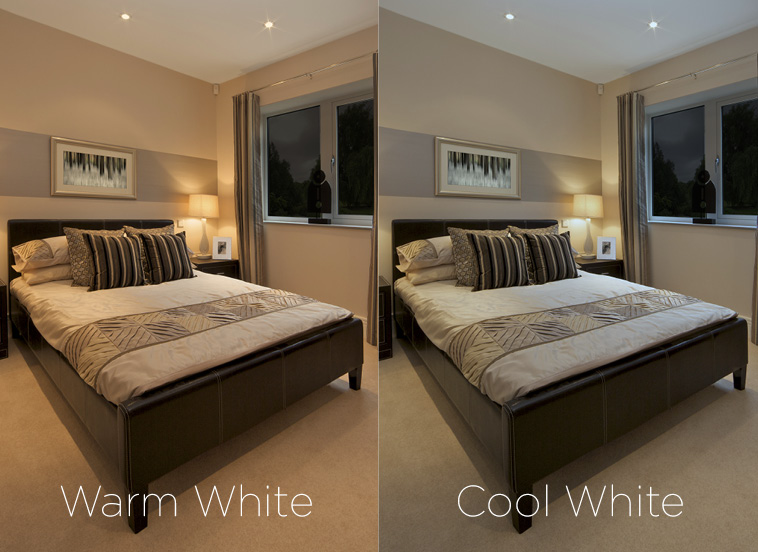
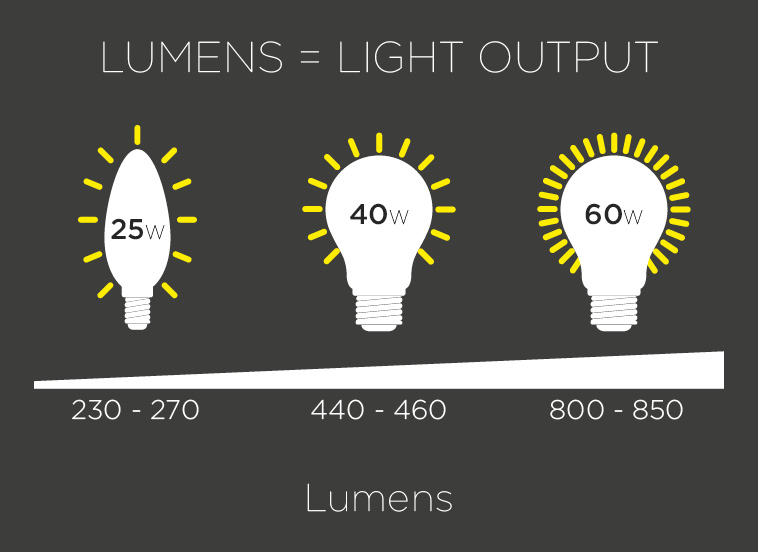
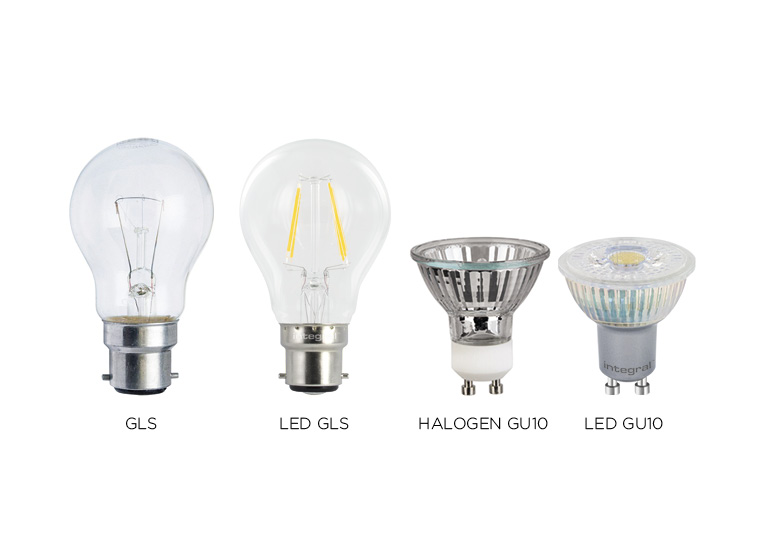
HIGHEST
QUALITY
COMPETITIVE
PRICES
EXPERTISE
EXTENSIVE
STOCK
NEWSLETTER
Sign-up to our newsletter and stay up to date with the latest product information and special offers.


